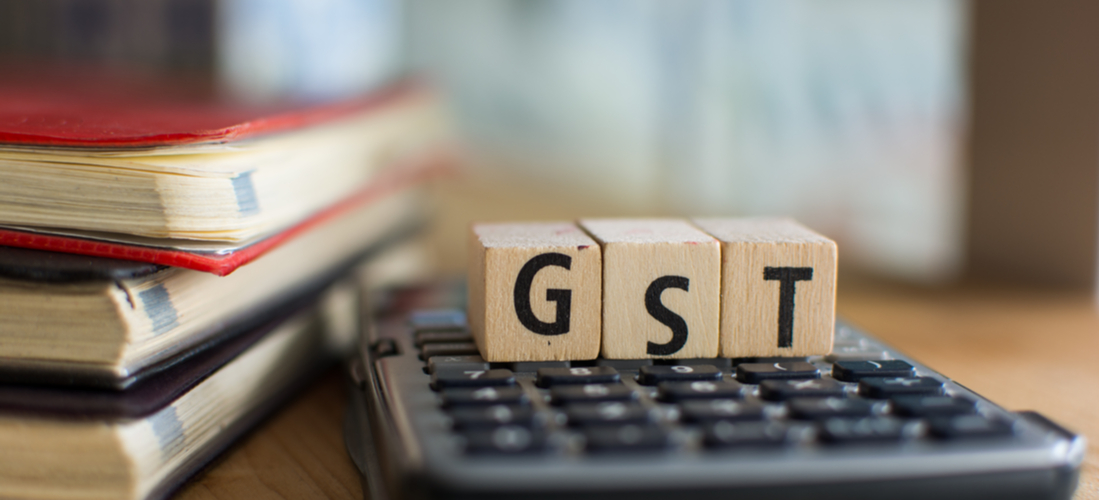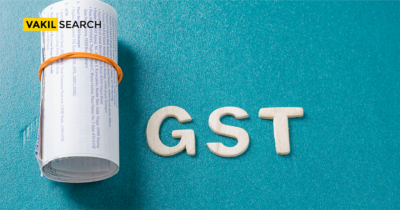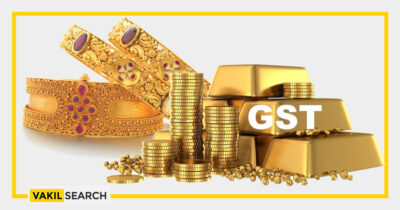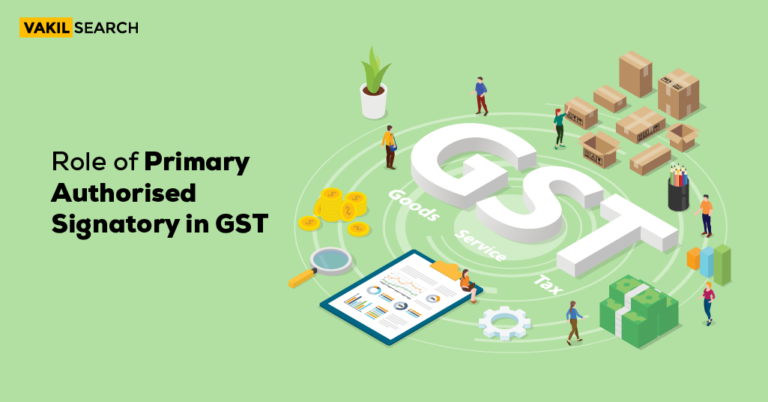This article talks about CGST, SGST and IGST. It discusses and mentions the different GST rates. It further explains the difference between and use of HSN codes and SAC.
GST is known as the Goods and Services Tax. Surprisingly, the idea of moving towards GST was first mooted by the then Union Finance Minister PM Chidambaram, in his Budget speech for 2006-07. Know Are GST slab Rates Different for Goods & Services?
It is an indirect tax that was introduced to replace and simplify many indirect taxes in India such as excise duty, VAT, services tax, etc. Make GST Rate List and GST Act was passed in the Parliament on 29th March 2017 and came into effect on 1st July 2017 Under the GST law.
One Nation- One Tax (need for demarcation of GST into CGST, SGST, IGST)
The central government collects CGST, SGST or IGST depending upon whether the transaction of Goods is intrastate or interstate.
- When the supply of goods or services takes place within a state called intra-state transactions, then both the CGST and SGST will be collected.
- If the supply of goods or services occurs between the states, then only IGST will be collected.
GST is a destination-based tax, which raises the revenue of the State, against the pre-existent principle of origin-based taxation. The goods which are taxed, are the ones consumed but not by the state in which they are manufactured.
Central Goods and Services Tax (CGST)
Under GST, CGST is a tax levied on Intra State supplies (governed by the CGST Act) of both goods and services by the Central Government. It is paid usually along with the SGST, which implies that both the Central and the State governments combine their levies (not exceeding 14%).
State Goods and Services Tax (SGST)
Under GST, SGST is a tax levied on Intra State products (governed by the SGST Act) of both goods and services by the State Government and will be. As explained above, CGST will also be levied on the same Intra State supply but will be governed by the Central Government.
Union Territory Goods and Services Tax (UTGST)?
UTGST is very similar to SGST and is levied on the Union Territories of India, just like by the state governments on the intra-state supply of goods and services.
What is Integrated Goods and Services Tax (IGST)?
Under GST, IGST is a tax levied on all Inter-State supplies of goods governed by the SGST Act and services and will be governed by the IGST Act.
IGST will be applicable on any supply of goods and/or services in both cases of import into India and export from India.
This way:
- Exports would be zero-rated.
- Tax will be shared between the Central and State governments.
Why split into SGST, CGST, and IGST?
India is a federal country where both the Centre and the States have been assigned the powers to levy and collect taxes. Both the Governments have distinct responsibilities to perform, as per the Constitution, for which they need to raise tax revenue.
Use our GST calculator to Calculate GST amount to be paid before registering for GST.
The Centre and States are simultaneously levying GST
The three types of tax structure are implemented to help taxpayers take the credit against each other, thus ensuring “One Nation, One Tax”.
Intra-State supply of goods or services is when the location of the supplier and the place of supply i.e., the location of the buyer are in the same state.
Inter-State supply of goods or services is when the location of the supplier and the place of supply are in different states. This serves two purposes:
One Nation, One Tax – so all taxes on all purchases are available as credits.
Dual tax system – both centres and states have their revenue.
What are GST Slab rates?
GST slab rates refer to the different tax rates applicable under the Goods and Services Tax (GST) regime in India. The GST system has four main tax slabs, which are 5%, 12%, 18%, and 28%.
Goods and services are classified into different categories based on their nature, and each category is assigned a specific tax slab. The 5% slab applies to essential goods such as food items, health-related products, and books. The 12% and 18% slabs apply to goods and services such as processed foods, clothing, electronics, and financial services. The highest slab of 28% is applicable to luxury items and services such as cars, tobacco products, and five-star hotels.
In addition to these four main tax slabs, there is also a 0% tax slab for certain goods such as agricultural products and exports. Some goods and services are exempt from GST altogether, such as healthcare and education services.
Goods
1) Edibles like Spices, Plain chapati, Oil, Pizza bread, Baby food, Sugar, Cashew nuts, Indian sweets, Frozen vegetables, Unbranded nankeen, and wind-based Atta Chakki.
2) Coal biogas
3) Fertilisers
4) Life-saving medicines and drugs
5) Accessories for specially-abled individuals (braille watch, paper, hearing aids, walking sticks)
6) Incense sticks
7) Footwear and apparel under Rs.1000
8) Handmade items like carpet, braids, ornaments
9) Natural cork
10) Fly-ash blocks
11) Numismatic coins
12) Ice and snow
13) Kites
14) Marble rubble
Services
1) Aircraft leasing
2) Crude and petroleum products transport
3) Takeaway food
4) Economy class flight tickets
5) Newspaper printing
6) Tailoring
7) Transport services via AC cabs and radio taxi
8) Restaurants
9) Print media advertisement space
10) Tour operator services
List of items under the 12% GST slab rate
Goods
1) Processed food: Frozen meat, Sausage, Fruit juices, Ketchup, Cakes
2) Dairy products: Butter, Cheese, Ghee
3) Dry fruits and nuts like almonds
4) Packaged Drinking water
5) Cooking utensils
6) Sewing machines
7) Corrective spectacles and glasses
8) Exercise books and notebooks
9) Walkie-talkies or two-way radios
10) Handmade matches
11) Fixed speed diesel engines
12) Ornamental framed mirrors
13) Containers- Purses, Pouches, Handbags, Jewellery box
15) Photographs
16) Diagnostic kits
17) Plastic beads
18) Man-made yarn
Services
- Business-class flight tickets
- Movie tickets worth less than Rs.100
- Hotel stay with a daily cost of less than Rs.7500
- Room tariffs above Rs.1000 and below Rs.2500 per day
- Mining Metals and drilling of natural gas
- Real estate construction for sale IP rights on a temporary basis
- Foremen-led chit fund services
- Railway coaches, wagons, or rolling stock sans refund of ITC
- Eating and drinking at outlets without a liquor license or AC
- Goods Transportation in containers via rail not under the Indian Railways
List of items under the 18% GST slab ratE
Goods
1) Eatables: Mineral water, Pasta, Biscuits, Pastries, Cornflakes, Soups, Curry paste, Preserved vegetables, Instant food mixes, Food supplements, Mixed condiments, Flavoured refined sugar, Cocoa butter, Ice cream, Chocolate, Chewing gum
2) Capital goods: Jute, artificial plastic, Aluminium foil, Optical fibre, Winding wires, Coaxial cables, Ball bearing, Roller bearing, Helmets and helmet parts, Electrical boards, Diesel engine parts
3) Household products: Hair oil, Shampoo, Toothpaste, Detergent, Room deodorisers, Shaving and after-shave products, Mattress, Furniture (including those made of bamboo)
4) Perfume
5) Cosmetic preparations
6) Make-up and beauty products
7) Weight-measuring devices
8) Installations: Doors and windows, Sanitary ware, Aluminium frames
9) Electrical and electronic appliances- Refrigerators, Water heaters, Washing machines, Televisions (up to 32 inches), Computer monitors (below 17 inches), Cameras, Vacuum cleaners, Hair shavers, Hair curlers, Hairdryers
List of items under the 28% GST slab rate
The GST percentage for most luxury items is set at 28%. This is the highest standard rate. Some of these items come with an additional charge on top of the GST slab rate assigned to them. This is called Cess- a compensation charge to make up for the lack of revenue due to GST implementation.
With Cess
Goods
1) Caffeinated beverages
2) Tobacco and tobacco products
3) Pan masala and Gutkha
4) Fuel: Petrol, LPG, CNG
5) Motorised vehicles (except motorcycles)
Services (Sports majorly)
1) 5-star hotel services
2) Gambling
3) Go-karting
4) Ballet
HSN Code and SAC Code
In the GST regime, the goods and services in India are classified under two sections either in the HSN Code system or the SAC Code System. The HSN code under GST and SAC codes are used in almost 200 countries as a basis for their customs tariffs.
HSN Code:
HSN – Harmonized System Nomenclature, a product nomenclature system developed by the World Customs Organization (WCO), was developed in 1988. This is a 6-digit code that classifies various products. It’s been approved and used by manufacturers, importers and exporters for a long time now. The HSN code contains 21 sections.
SAC:
Services Accounting Code (SAC) is a classification system for services which is developed by the Service Tax Department of India. With the help of the GST Service accounting code, the rates for services are fixed in five slabs namely 0%, 5%, 12%, 18%, and 28%. Indian Taxation System has categorized roughly over 120 services for levy of GST under these 5 tax slabs.
- The first 2 digits (99) are common for all services.
- The next 2 digits represent the major nature of service.
- The last 2 digits represent the detailed nature of the service.
Conclusion
There is considerable hubbub around the idea that a few of the smaller tax rates, will be hiked to 6% and 13%, as talks around moving to relatively more simplified slabs with fewer rates, were raised in the GST council meetings with the Union and state Finance Ministers. As the country is still recovering from the unnerving economic impact caused due to the outbreak of Covid-19, the decision of increasing GST and implementation of new or revised rates is met with considerable scepticism among the masses.










